Ginisang Ampalaya at Hipon is a delicious vegetable stir-fry made of bittermelon, shrimp, tomatoes, and eggs. It's nutritious, tasty, and budget-friendly, too!
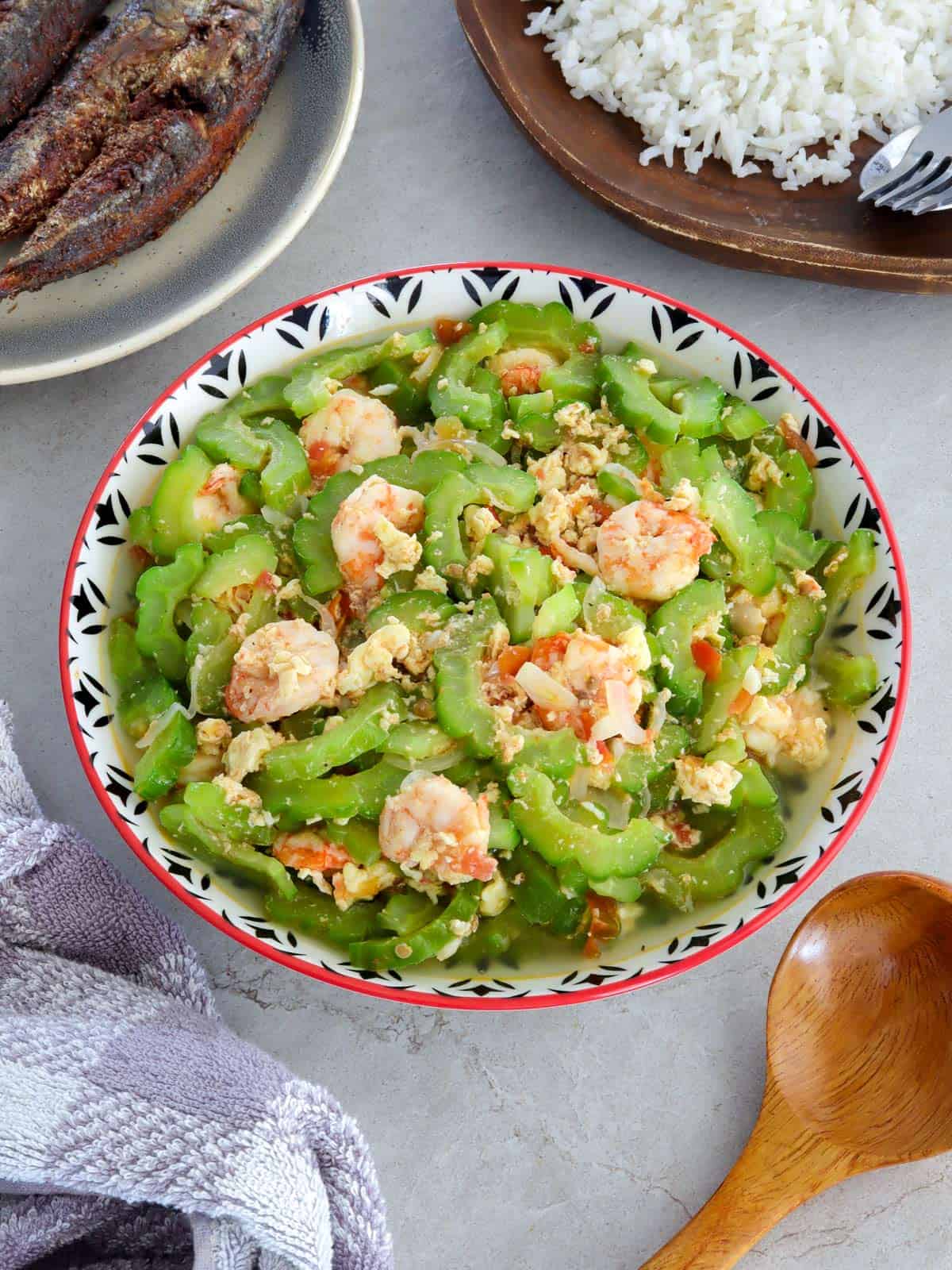
If you're looking for a simple vegetable dish, this ampalaya stir-fry with shrimp must be on your regular meal rotation. You'll love it as much as I do for many reasons.
- Quick and easy to make in under 30 minutes. Plus, there are no complicated ingredients to run around town for!
- It's budget-friendly and adaptable. If you don't like shrimp, you can easily switch up the flavors by substituting minced or diced pork. You can also try this try ampalaya con carne with beef or ginisang ampalaya with sardinas.
- It's as nutritious as it is delicious. It makes a tasty meal with steamed rice, and it's packed with protein and good-for-you nutrients. You'll feel good serving it to the whole family.
Ingredient notes
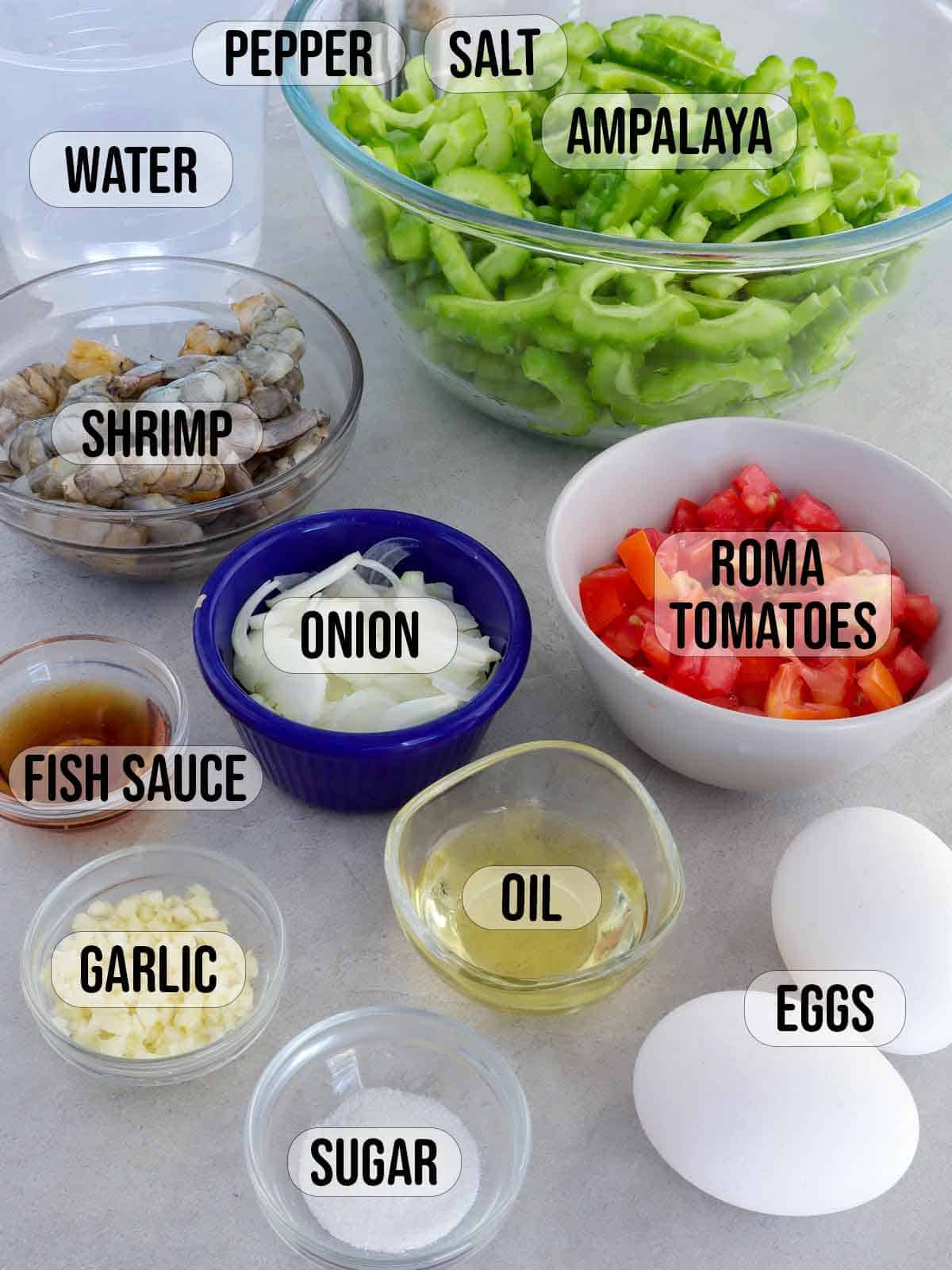
- Ampalaya- also called bitter melon. Choose young gourds, as the fruit toughens and becomes intensely bitter when it matures and ripens to yellow-orange.
- Onions and garlic- the classic base for Filipino ginisa recipes.
- Tomatoes- I like ripe Roma or plum tomatoes for a juicy and sweet taste.
- Shrimp- For the best results, use small to medium-sized shrimp. You can substitute other protein, such as ground or diced pork.
- Fish sauce- adds saltiness and umami.
- Water- or shrimp stock for a flavor boost.
- Eggs- for additional protein. You can substitute with crumbled firm tofu.
- Sugar- neutralizes some of the bitter taste
- Seasonings- salt and pepper to enhance flavor and add a touch of zing
Old wives' tales
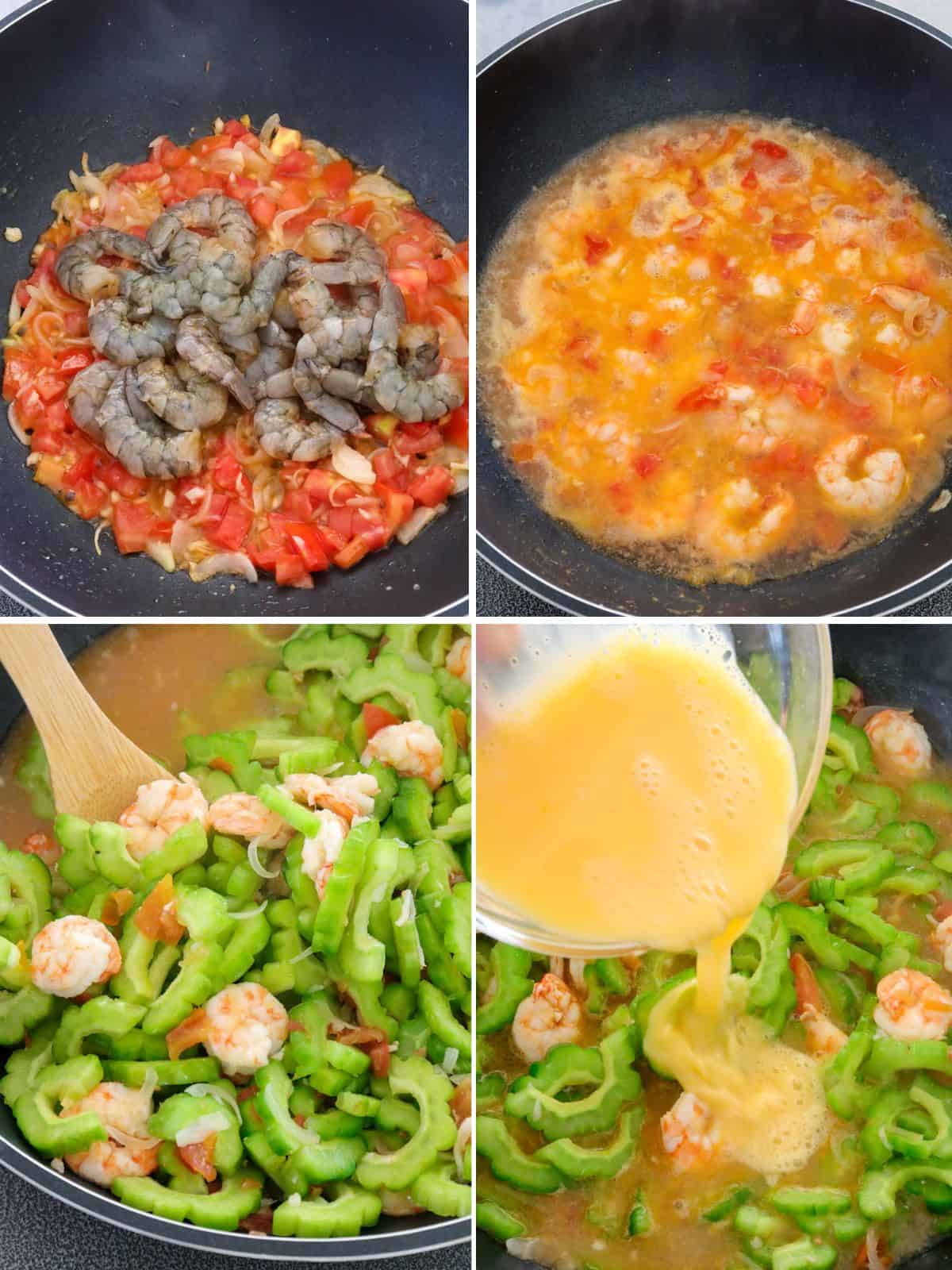
It's funny how many wives' tales exist about how to rid ampalaya of its natural bitterness. A popular one is "the cook should be smiling and singing while cooking the ampalaya," and another is "the cook has to be a virgin."
Since I am not of a bubbly disposition and have not been pure in thoughts or actions for at least two decades, am I doomed for acrid ampalaya? No, ma'am, because luckily, I have a few tricks on how to conquer bittermelon!
To salt or not to salt
One traditional method of preparing ampalaya is to let the slices sit in salt until they begin to weep and then squeeze to eliminate the bitterness. I often skip this method because a) I'm lazy and don't like extra work, and b) bittermelon is a nutritional powerhouse. Why deplete the vegetable of its beneficial juices?
These simple tips will make your next ginisang ampalaya at hipon palatable without the customary salting. Try them, and let me know what you think in the comments.
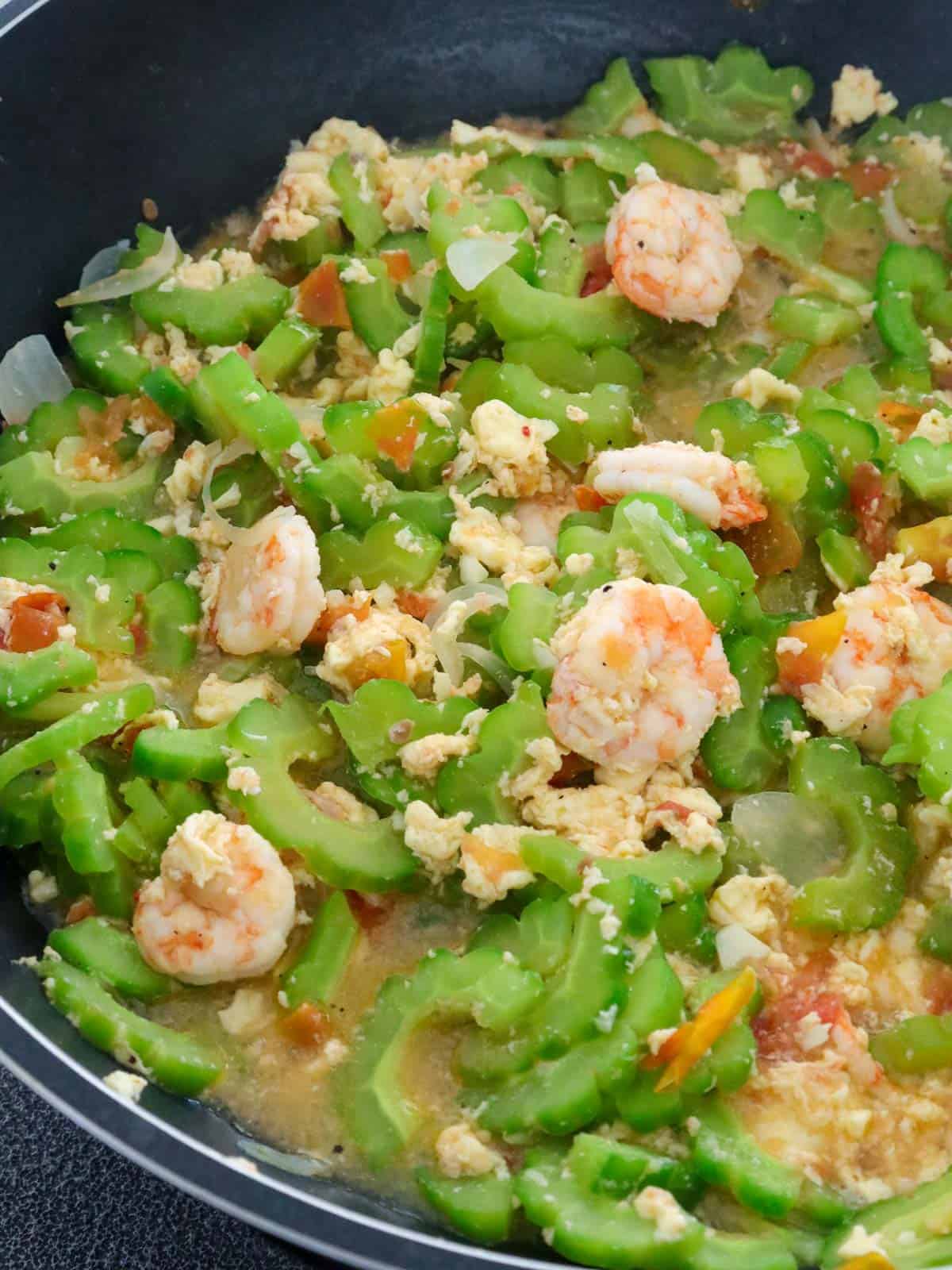
How to remove the bitterness of ampalaya
- Scrape off all the white pith inside and slice the green flesh as thinly as possible.
- Keep stirring to a minimum, and do not overcook.
- Sugar, used in the right proportion, can help neutralize bitter flavors. Sprinkle the dish with about ½ teaspoon.
How to serve and store
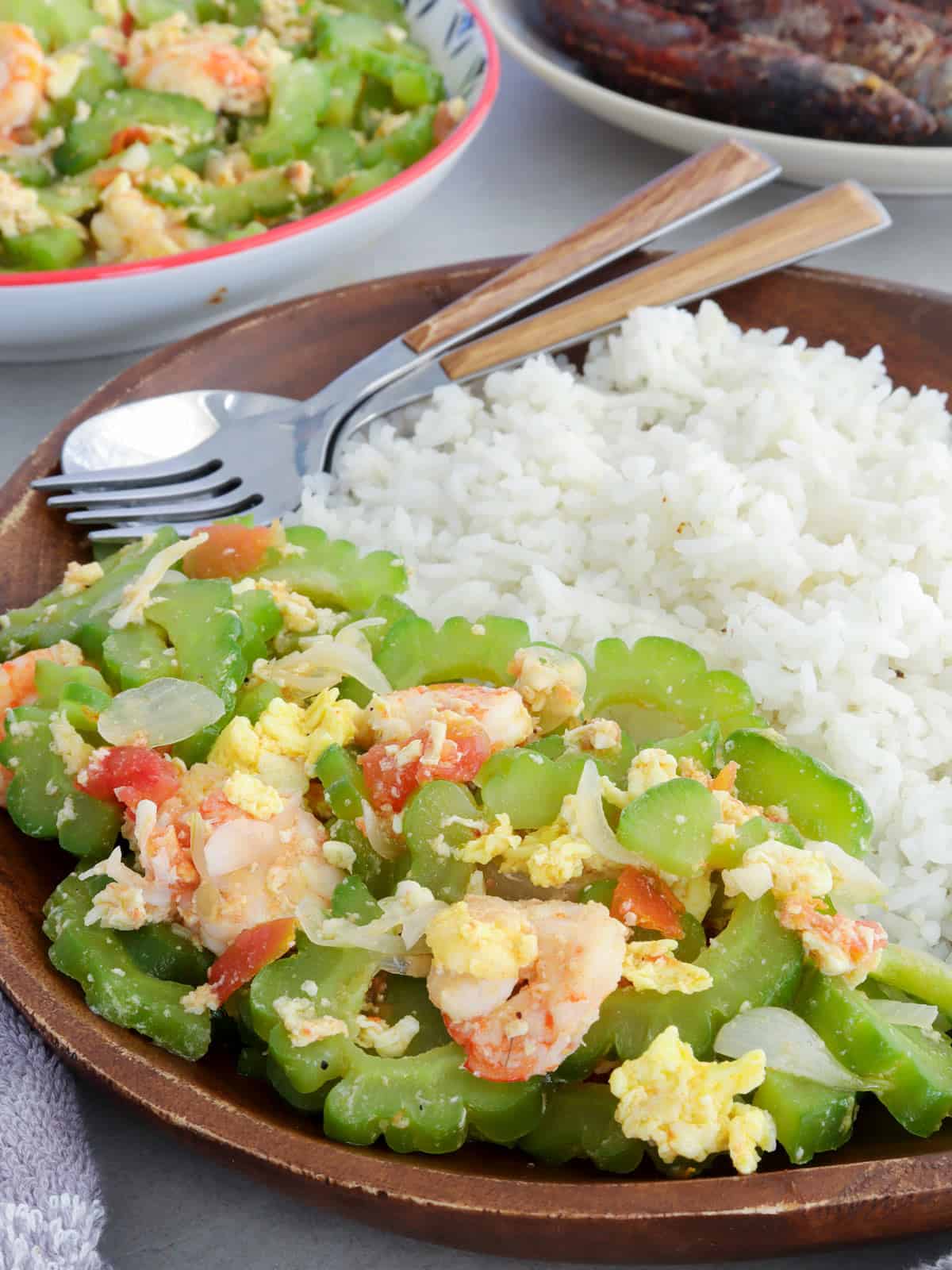
- Ginisang ampalaya at hipon is delicious for breakfast, lunch, or dinner. Serve it with steamed rice and your choice of inihaw na liempo, toyomansi pork chops, or daing na bangus for a tasty and healthy meal.
- Store leftovers in a container with a tight-fitting lid and refrigerate for up to 3 days.
- Reheat in a pan over medium heat or in the microwave at 2 to 3-minute intervals to 165 F.
More ginisa vegetable recipes
Ingredients
- 4 medium ampalaya
- 1 tablespoon canola oil
- 1 onion, peeled and thinly sliced
- 2 cloves garlic, peeled and minced
- 2 large Roma tomatoes, chopped
- 1 tablespoon fish sauce
- ½ pound medium shrimp, peeled and deveined
- 1 cup water
- 2 eggs, beaten
- ½ teaspoon sugar
- salt and pepper to taste
Instructions
- Cut ampalaya lengthwise and with a spoon, remove seeds and scrape off white pith. Sliced thinly and place in a bowl of cold water until needed. Drain well when ready to use.
- In a wide skillet over medium heat, heat oil. Add onions and garlic. Cook, stirring regularly, until softened.
- Add tomatoes and cook, mashing with the back of the spoon, until softened and release juice.
- Add fish sauce and cook for about 1 minute.
- Add shrimp and continue to cook, stirring occasionally, until shrimp starts to change color.
- Add water and bring to a boil.
- Add ampalaya and gently toss to combine. Cook for about 2 to 3 minutes or until tender yet crisp.
- In a thin stream, add eggs and gently stir to distribute. Continue to cook for about 1 minute or until eggs have set.
- Season with sugar, salt, and pepper to taste. Serve hot.
Notes
- Scrape off all the white pith inside and slice the green flesh as thinly as possible.
- Keep stirring to a minimum, and do not overcook.
- Sugar, used in the right proportion, can help neutralize bitter flavors. Sprinkle the dish with about ½ teaspoon of salt and pepper.
Nutrition Information
“This website provides approximate nutrition information for convenience and as a courtesy only. Nutrition data is gathered primarily from the USDA Food Composition Database, whenever available, or otherwise other online calculators.”

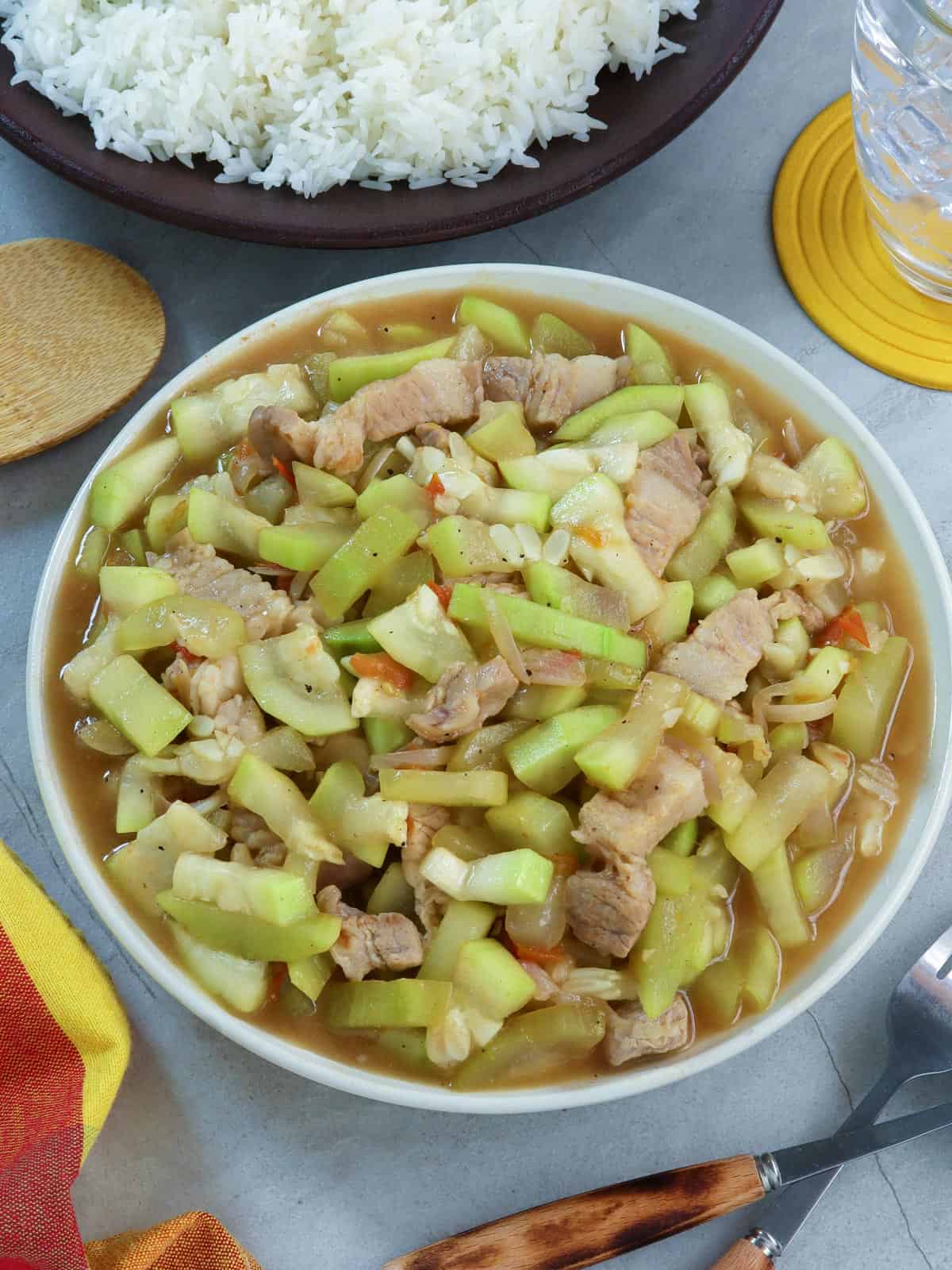
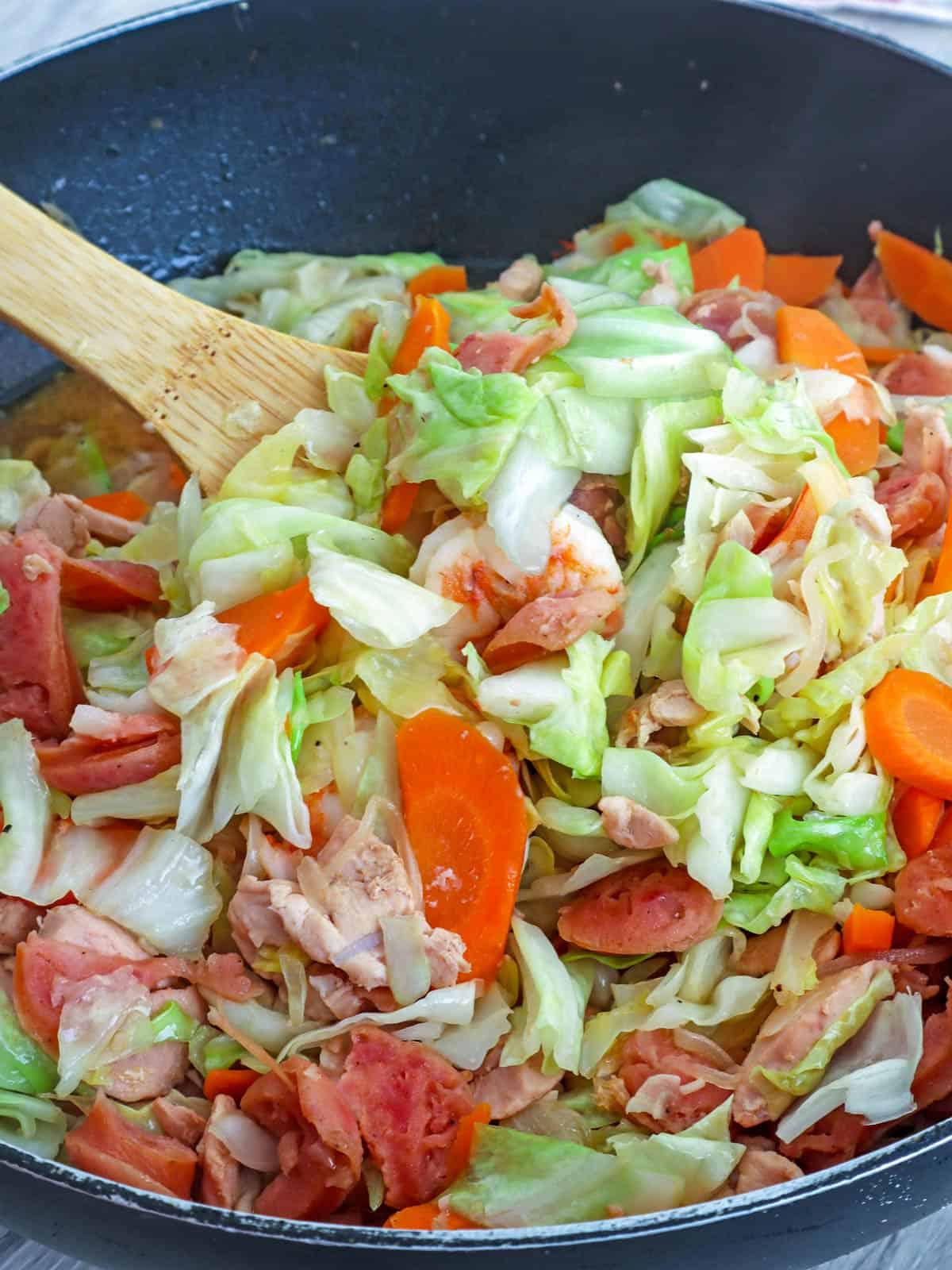
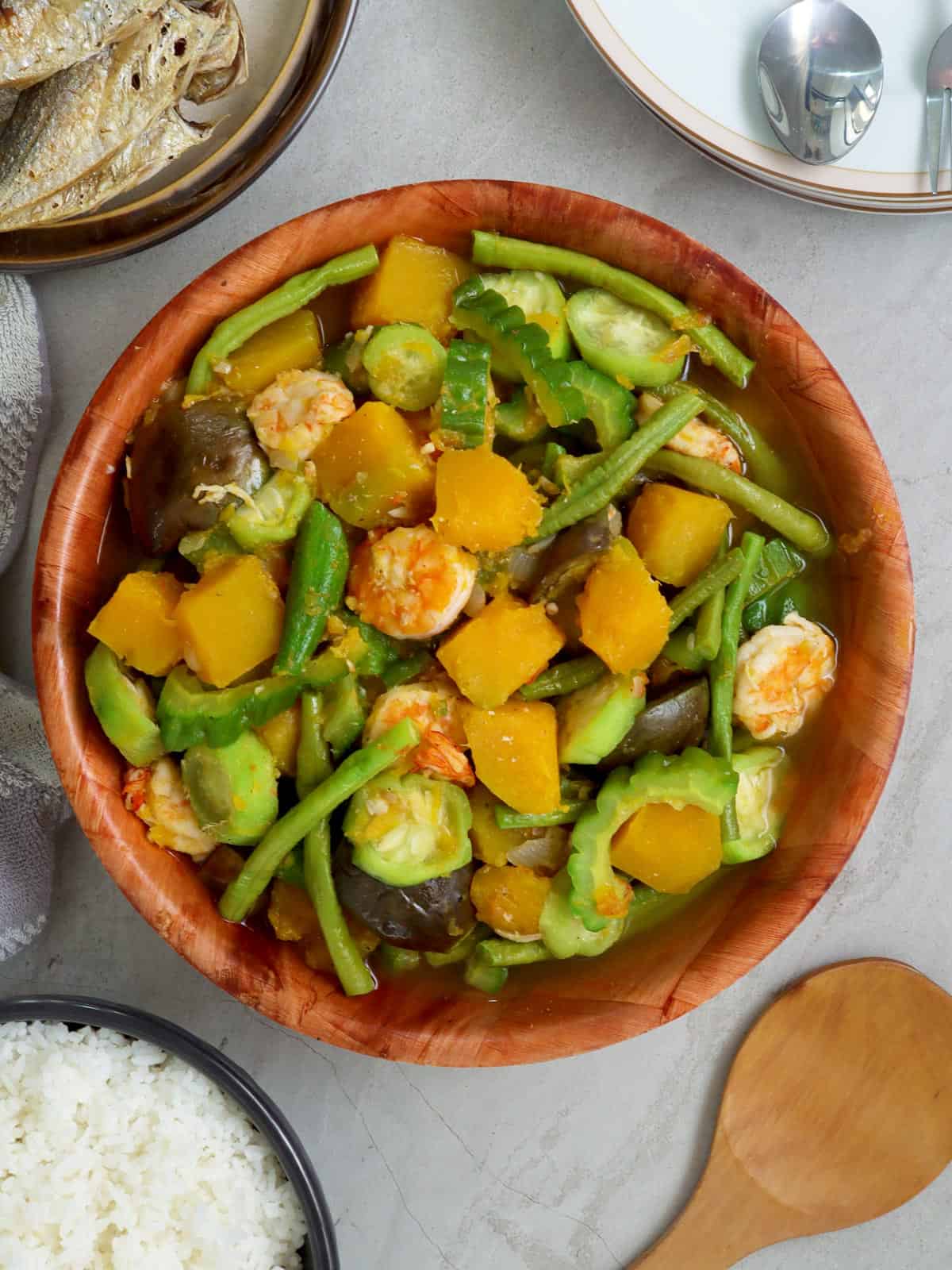
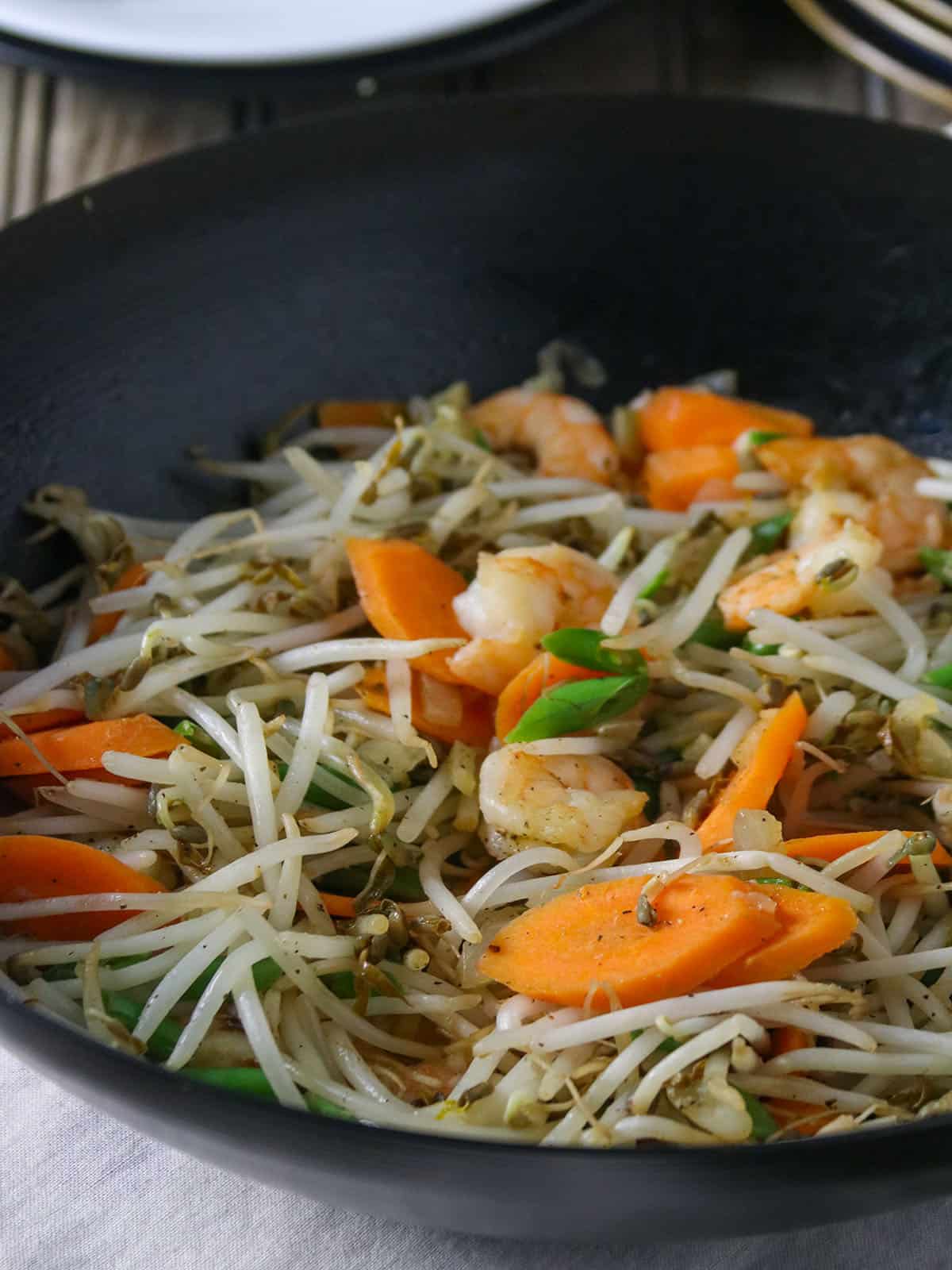
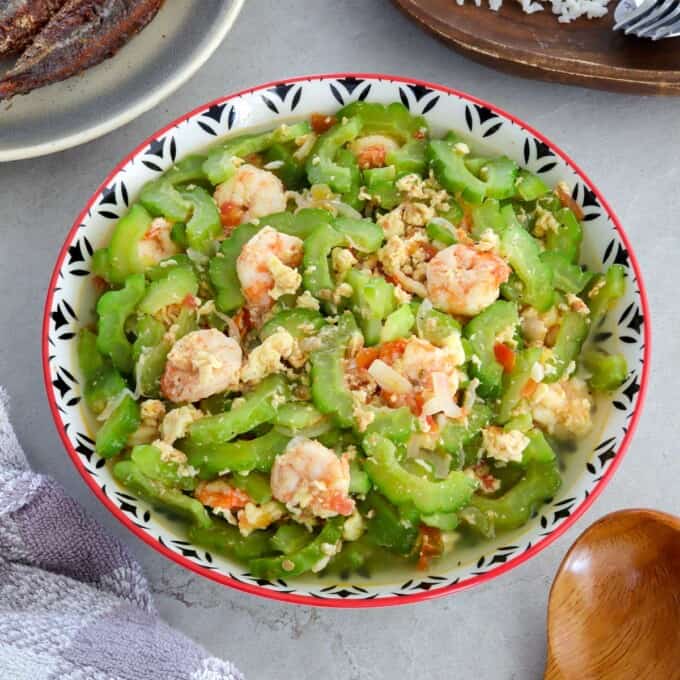
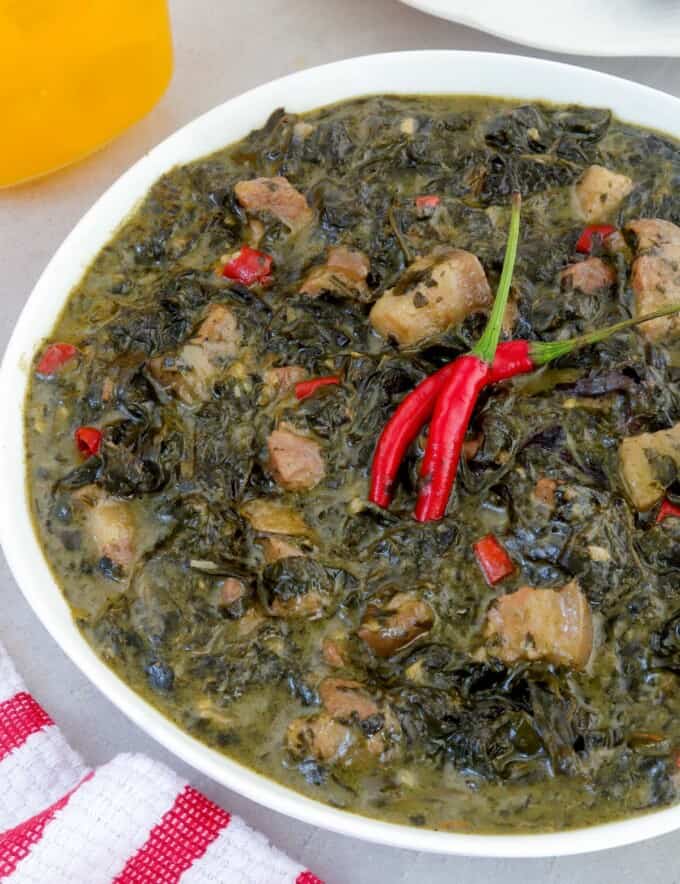
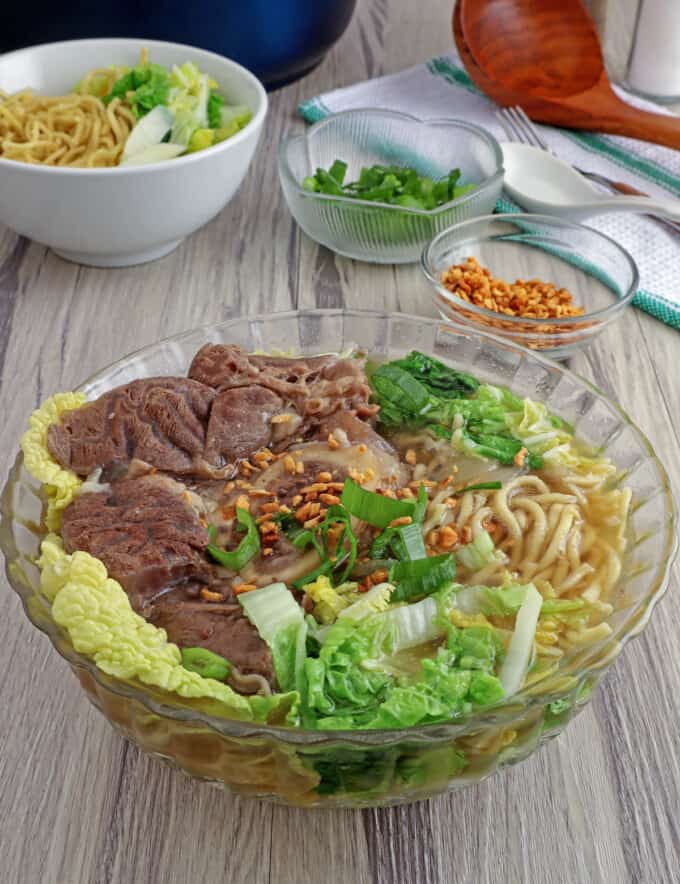
Fe says
Thank you for sharing this recipe! My mom cooked it for me as a child and this version brings back great memories.